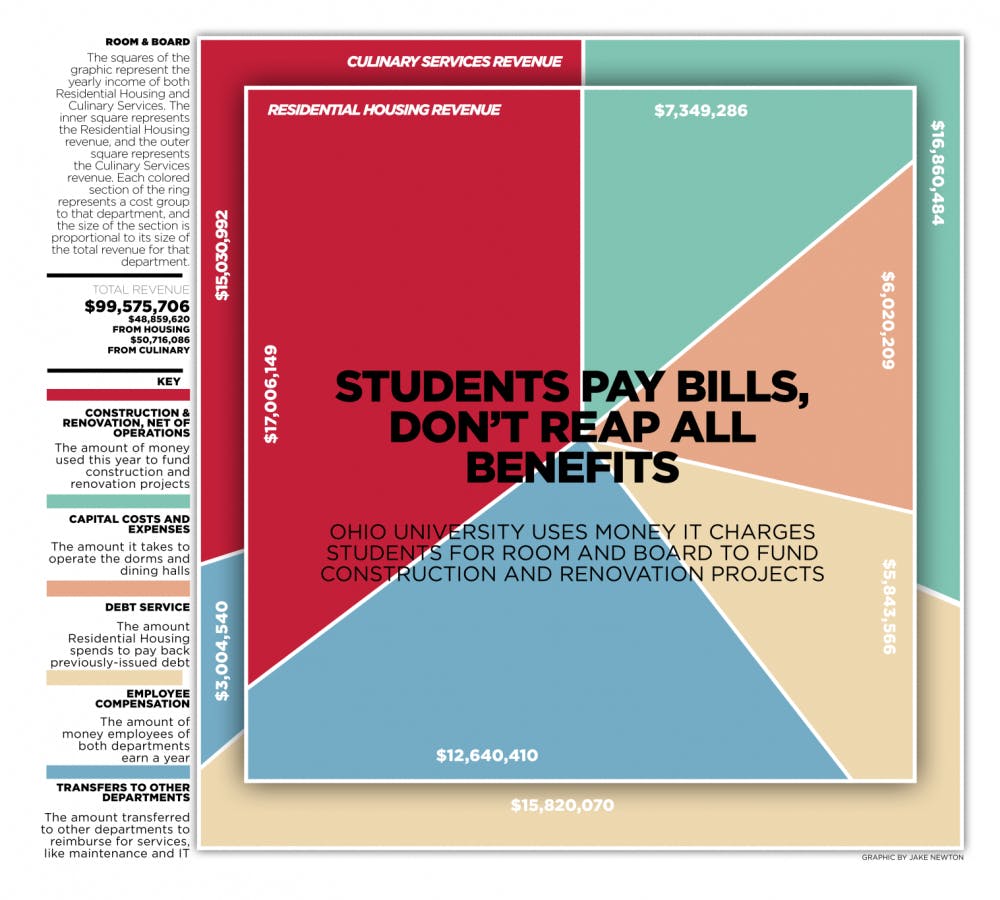About 24 percent of what an average student pays for room and board goes toward constructing and renovating new residence and dining halls they may never get to use.
An average student from Ohio pays about $11,500 a year for room and board, but the university only needs about $8,800 of that to break even and operate its dining and residence halls, according to a Post analysis of OU budget data.
In total, the operations bring in about $92.8 million — almost entirely from student fees. After all non-discretionary items — paying bills, employees, etc. — are paid for, the university will have about $26.6 million left over.
That’s where discretionary spending on new construction and renovation comes in.
“The funding to pay for that construction isn’t going to come anywhere but from students,” OU Budget Director Chad Mitchell said. “It’s ultimately always going to be student fees that that capital cost is going to come from.”
But OU officials have consistently said this money is going to good use.
“That’s not money we use to throw million-dollar pizza parties,” said Pete Trentacoste, director of Residential Housing at OU.
Current projects funded by these dollars include the renovations of Boyd and Jefferson dining halls, and the Phase I Housing Project that is being constructed next to Adams Hall on South Green.
That housing plan — meant to replace aging space, not create more space on campus — is budgeted at $110 million, with about $10 million coming from Residential Housing reserves. The university is funding the rest by issuing debt — something Culinary Services says it will not do to fund its projects.
Culinary Services will put about $9.5 million toward the $15 million price tag to renovate Boyd and Jeff this year. An additional $5.5 million is transferred from other departments to help cover the rest.
Room and board is an essential piece to funding those renovation projects, OU officials have said, so lowering the cost of room and board, while arguably making school more affordable, would mean less construction and renovation on campus.
Still, the average room and board at OU is higher than both Miami University’s $11,109 room and board fees and Kent State University’s fees of $9,908.
But those universities likely have different funding models. Gwyn Scott, associate vice president of auxiliaries at OU, noted that it is hard to compare budgets between universities because universities develop their budgets in very different ways.
According to previous OU budgets, this funding model isn’t new. The university has used student money from room and board fees to fund projects for at least three years, according to data provided by Mitchell, the OU budget director.
“It doesn’t really anger me,” Caitlin Sinks, an undecided freshman, said, “but I just assume that they are charging me more than they have to.”
@SETHPARCHER
SA587812@ohio.edu






